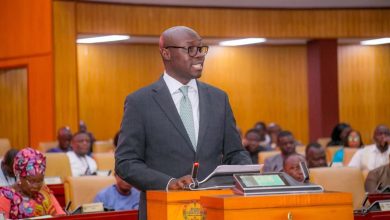Ghana Police Grabs Nigerian Jail Breakers In Ada

Some nine prisoners who broke jail in Nigeria on April 5 have been arrested in Ghana.
They were re-arrested by the Ada District Police Command in the Greater Accra Region.
The escapees are suspected to be part of over 1,800 inmates who escaped from a prison in Nigeria after it was attacked by gunmen earlier this month.
The attackers reportedly entered the Nigerian prison yard in the South-Eastern town of Owerri by using explosives to blast the administrative block.
According to the police, the fugitives closely monitored based on intelligence as they crossed the Volta River into Ada Foh on Sunday, April 18.
The investigative team, however, tracked them to an area known as Clinic Junction Lorry Station and seized the Sprinter bus which had the Nigerian suspected jailbreakers on board.
The nine, including a female in the bus with registration number, ER 1657-14, were captured while were preparing to leave for Accra.
They are Freedom Yusuf 25, Emmanuel Obinnah Chiedozie, 27, Steve Eyenuku 33, Enebeli Lucky 29, Yommi Usmah 29, Kelli Ekureni 33, Obi Onuora 38, Patrick Chanar 47 and Bless Eyenuku 25.
They had with them some personal belongings, passports, ID cards, and local and Nigerian currency.
The escapees have been handed over to the Ghana Immigration Service in Tema to assist with investigations. Source: Myjoyonline.com










